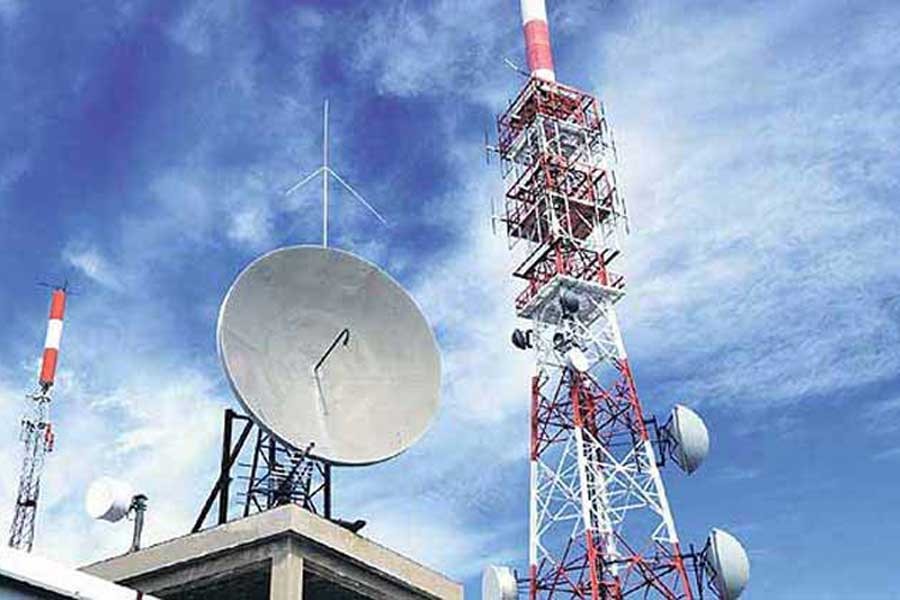The country’s telecommunication and information technology sectors, buoyed by robust growth that took place in last few years, have generated diversified employment opportunities for the countrymen – especially among the young generation.
Powered by the bliss of internet and technology, the young people engage themselves with information technology-enabled services (ITES) these days.
The ITES effectively covers the entire gamut of services like e-commerce, call centres, medical transcription, medical billing and coding, back office operations, revenue claims processing, legal databases, content development, payrolls, logistics management, GIS (Geographical Information System), HR services, web services and many more.
When asked, Bangladesh Association of Software and Information Services (BASIS) President Mustafa Jabbar termed internet as the "platform" or "highway" and said "the more you will expand the highway, more opportunities will be opened up."
According to him, introduction of 4G in early next year would meet the necessity although 3G could not offer the expected speed.
"Our everyday lives have tremendously been eased by the internet and all contribution for the transformation goes to Prime Minister Sheikh Hasina for her 'digital Bangladesh' campaign."
He hoped that the Year 2018 would be boomed for ITES as the Finance Minister in the last Digital World announced to withdraw VAT and SD on the internet.
Answering to a query regarding the number of people engaged with ITES, he said BASIS has over 1,000 registered ITES firms but it's hard to figure out the actual number as many works individually.
Under the "Vision-2021", the government has aimed to connect cent per cent population with internet and create over 2.0 million employments in ICT sectors in next three years. To expand the ITES, the government is setting up 28 hi-tech parks across the country.
The government has installed 3,600 computer labs in different educational institutions to offer education and internet service to student and youth while 40 cyber centres in 40 universities and university colleges.
Besides, work is going on to install a total of 3,905 Sheikh Russell Digital Computer Labs at primary, and secondary and higher secondary schools as well 65 language training labs in all districts. In addition, 152 community e-centres have been set up at upazila level across the country to bring the government services at the doorstep of the people. Moreover, Union Digital Centre (UDC) has also been installed at 4,501 union parishads.
On the other hand, Leveraging ICT for Growth, Employment and Governance Project is going on to generate 40,000 skilled manpower.
Moreover, 20,000 women have been given basic ICT literacy training on online outsourcing under learning and earning project while another two projects --one for providing IT training to grassroots level 166,320 women on caravan and other to give ICT training to 12,000 women under women empowerment project.
At present, total consumption of international internet bandwidth in the country increased by 73.38 per cent year-on-year to 456 gigabits per second at the end of third quarter amid growing engagement of people in internet, according to Bangladesh Submarine Cable Company Limited (BSCCL).
Sector insiders said flourishing of local contents, introducing online-centric services and expansion of 3G services also helped in attracting internet users and bandwidth uses accordingly.
Terming this growth as 'tremendous', they said still there were opportunities left to give a boost to the market and the country would lead the data segment once the fourth generation (4G) mobile data service in launched.
Meanwhile, Bangladesh has connected with second submarine cable SEA-ME-WE-5 to ensure redundancy which will provide another 1500 Gpps bandwidth alongside the first submarine cable SEA-ME-WE-4 and six international terrestrial cables for global connectivity.
The number of internet users in the country stood at 80.2 million at the end of November this year, which was 66.9 million at the end of September last year and only 4.0 million in nine years ago, as per the calculation of Bangladesh Telecommunication Regulatory Commission (BTRC).
Of them, 74.7 million use internet on mobile phones, 5.34 million through broadband lines and 88,000 through Wimax.
The ICT industry touched the milestone of sixty million active internet connections in July 2016, fifty-million landmark in August 2015 and forty million mark in September 2014, according to BTRC data.
It said the mobile phone users was only 46 million in the early of 2008, but the number has now stood 143.1 million in November, of which 3G subscribers reached at nearly 40 million.
On the other hand, social media users rose to over 30 million while daily mobile phone-based transaction stood at nearly Taka 10.00 billion.
The country’s tele-density is now 86.6 per cent, which was 34.5 per cent in 2008 and internet density reached 47.62 per cent from 2.67 per cent in 2008.
Association of Mobile Telecom Operators of Bangladesh (AMTOB) observed the year 2017 seemed to be a very dynamic year for the telecom sector, since many happenings took place during this period.
AMTOB Secretary General TIM Nurul Kabir termed the initiative to introduce 4G/LTE service as a significant milestone and told BSS that significant growth in mobile users, internet penetration, data usage and handset penetration that is contributing to the overall economy of the country.
"Over the period, it has been accomplished that mobile sector is the digital service providers and key enablers of the connected society, since they facilitate all kinds of business, social communication, access to information, entertainment, e-commerce, m-commerce, and many other forms of digital services," he said.
He also added, "It has created many sub-subsectors too, such as content providers, local handset manufacturing sectors, value added services, and innovative transport services such as Uber or Pathao."
The telecom operators’ body hopes that all the impediments will be resolved in the coming year and the telecom sector will contribute further to the economy.


